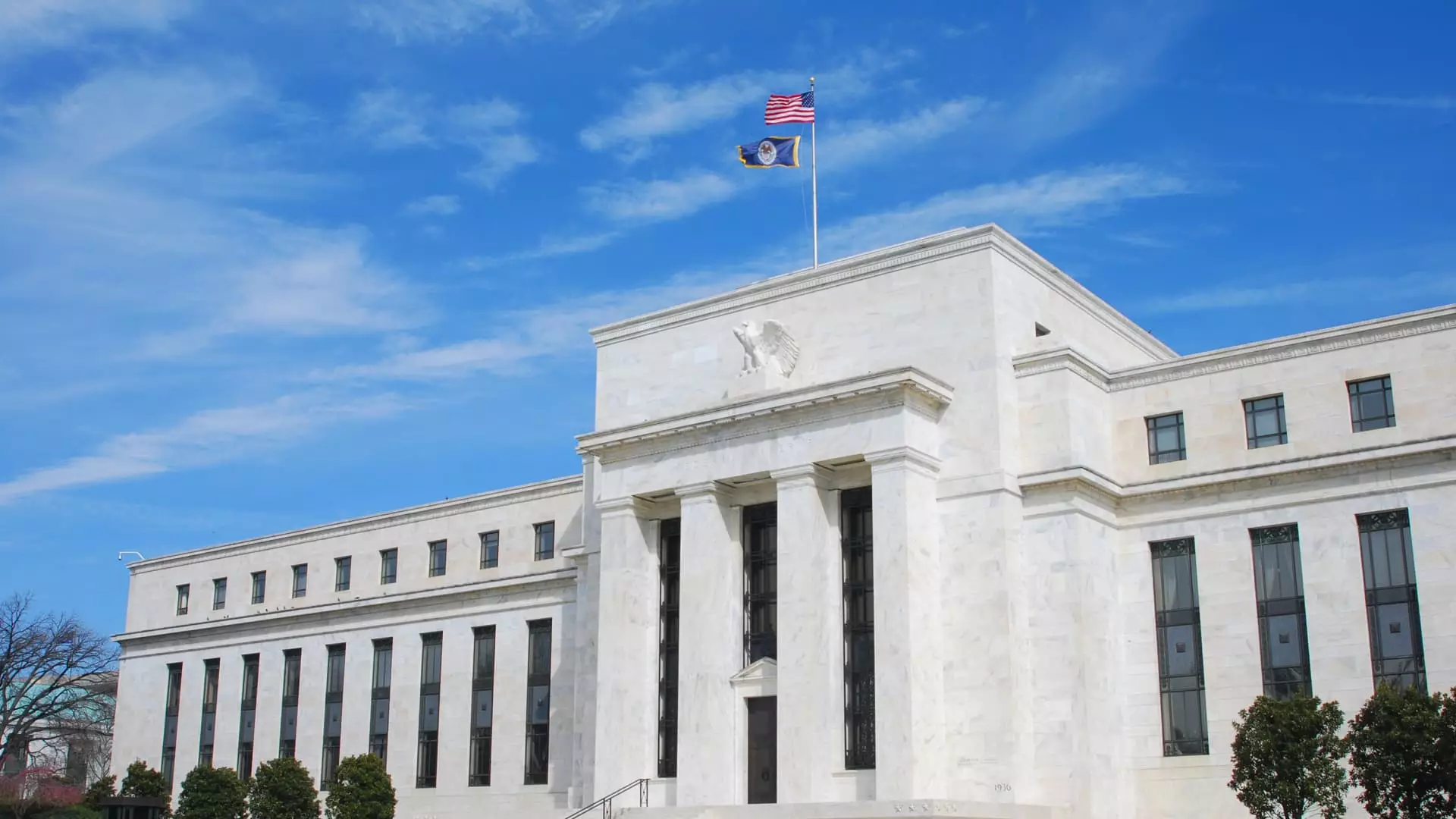As we anticipate the outcomes of the Federal Reserve’s upcoming two-day meeting, there is an unsettling yet predictable consensus: interest rates are poised to remain unmoved. This stagnation arrives on the heels of tentative positive shifts in inflation metrics, which offer a glimmer of hope for an economy teetering between recovery and turmoil. However, undercurrents of a brewing trade war present ominous threats to this fragile stability. One industry expert, Andrzej Skiba of RBC Global Asset Management, warns that tariffs are merely the opening salvos of a larger battle against rising prices—an inflationary spiral that could hinder any plans for future rate cuts by the Fed.
The dissonance between hopeful inflation news and the looming trade conflict invites critical examination of the Fed’s role in this economic landscape. Rate consistency, while fostering some stability, also suggests that the Fed is trapped within a paradigm of its own making. Instead of being proactive, it’s often reactive, desperate to navigate the tides of fiscal uncertainty without alarming consumers further.
The Consumer Experience in an Era of Economic Tightrope Walking
The implications of the Fed’s decision extend well beyond institutional walls; they touch the daily financial realities of American households. Greg McBride from Bankrate.com depicts a society in a state of worry and constraint. As consumers grapple with escalating living costs and mounting debt, their financial breathing room remains unrealistically tight. Interest rates—the costs linked to loans, credit cards, and mortgages—play a crucial role in how households manage their finances. The Fed’s current approach might seem conservative, but it leaves many individuals in precarious situations where their options are significantly limited.
While it’s true that mortgage rates have slightly dipped, the average 30-year fixed-rate mortgage still sits miserable at 6.77%. For many prospective homebuyers, this signals not relief, but rather a stark reminder of how financial pressures can stifle aspirations. Moreover, McBride’s assertion that consumers are “stretched and stressed” rings disturbingly true. A delayed reaction from the Fed in cutting rates signifies missed opportunities for alleviating this stress, allowing burdensome credit card rates and loan payments to remain an enduring nightmare.
Unless There’s Action, Financial Relief Remains Elusive
Despite a supposed easing of rates in some categories, the rate changes are comparatively minor and insufficient to enact real relief for strapped consumers. The delicate balance of financial pressures has multiple dimensions; revolving debt from credit cards is currently up 8.2% year over year, while auto loans and student loans maintain their relentless upward trajectory. How long can the average consumer sustain this onslaught of financial obligation without tangible measures from policymakers to assist?
For numerous Americans, particularly those eyeing the auto market, there’s a double whammy—rising car prices compounded by potential tariffs from newly ignited trade wars. Financial analysts like Schulz highlight the treacherous terrain that potential buyers are navigating: higher loan rates and the gnawing fear of increased car prices due to unpredictable trade policies. The disconnect between financial institutions’ strategies and consumer realities feels disheartening, fueling a cycle of skepticism towards a system designed to support everyday Americans.
Looking Beyond Interest Rates: Where’s the Real Financial Strategy?
Just as concerning as interest rates is the visible lack of systemic strategy. With each passing month of maintaining the current rates, the Federal Reserve amplifies a growing frustration among citizens. Their hesitance to adopt more dynamic measures to stimulate economic activity raises questions about their commitment to fostering genuine growth and stability. This moment underscores a significant misalignment between the experiences of average consumers and the powers that dictate their economic fate.
Although there’s a silver lining in certain savings accounts offering interest rates as high as 4.4%, such gains feel nearly irrelevant compared to the broader financial suffocation that many consumers face. The lack of decisive action points towards a vital need for advocacy—citizen voices must hold policymakers accountable, pushing them towards tangible solutions that genuinely benefit the middle class and alleviate financial burdens rather than simply offering band-aids on a gaping wound.
In this rapidly changing financial climate, it is critical for both consumers and industry leaders to demand accountability from the Fed and push for policies that effectively engage the reality of everyday Americans. The time for complacency has long passed; only a deliberate shift toward proactive economic policies can steer us away from the pitfalls of stagnation and into a more prosperous future.

